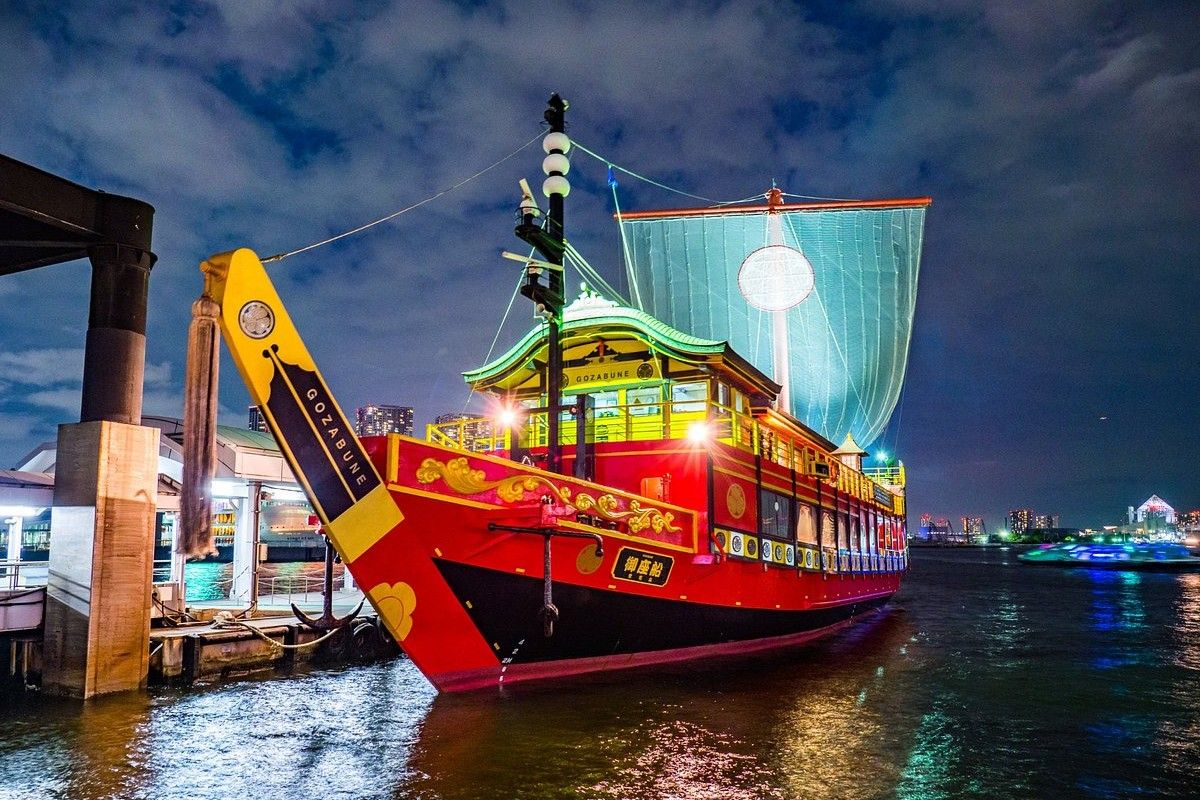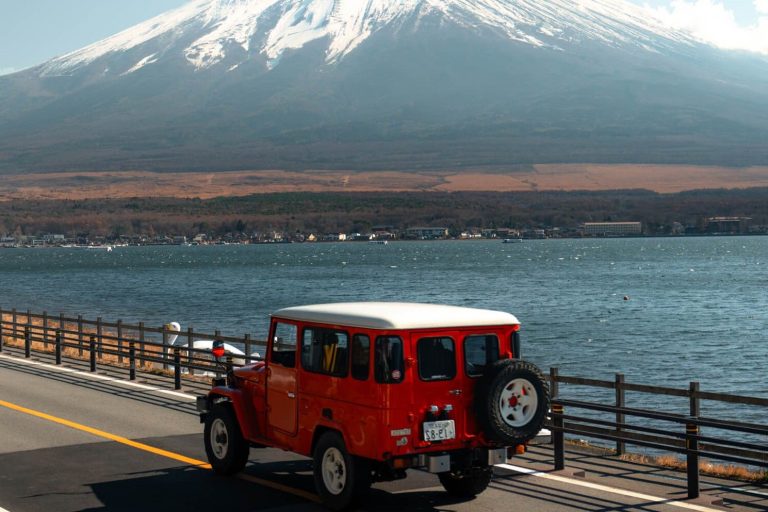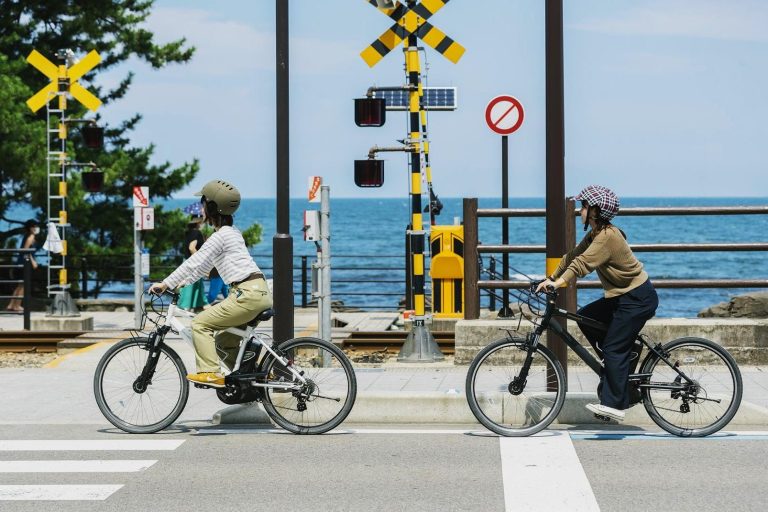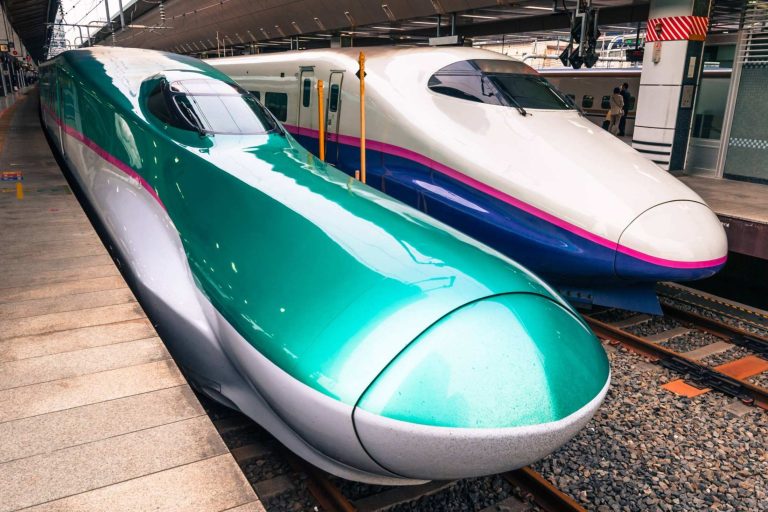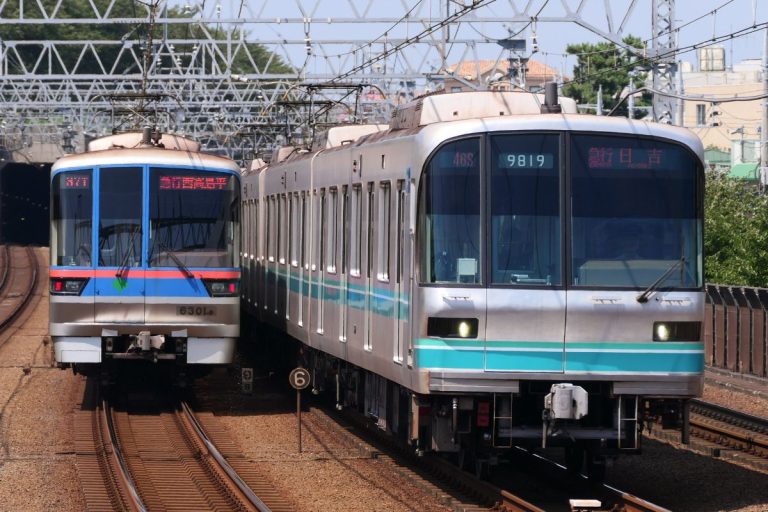Overview of Seaside Ferries in Tokyo Bay
Tokyo Bay offers a refreshing alternative to the bustling streets above, providing visitors with a unique perspective of Japan’s capital city. The water bus services operating across Tokyo Bay have transformed from simple transportation methods into full-fledged sightseeing experiences. These maritime journeys connect major tourist destinations while offering stunning views of iconic landmarks like Tokyo Skytree and Rainbow Bridge.
The ferry network serves as both a practical transportation option and an entertainment venue, allowing passengers to avoid traffic congestion while enjoying panoramic views of the city’s evolving skyline. Modern vessels equipped with comfortable seating, large windows, and climate control ensure pleasant journeys regardless of weather conditions. The strategic positioning of piers near major attractions makes these cruises easily accessible for both domestic and international visitors.
Types of Cruises Offered
Tokyo Bay’s ferry services cater to diverse preferences through multiple cruise categories. Regular sightseeing cruises operate on fixed schedules, connecting major piers throughout the day. Dinner cruises combine transportation with culinary experiences, featuring traditional Japanese cuisine served while gliding past illuminated cityscapes. Private charter options accommodate special events, corporate gatherings, and intimate celebrations.
Key Vessels in Operation
Three flagship vessels dominate Tokyo Bay’s cruise scene: HIMIKO, HOTALUNA, and EMERALDAS. Each boat features distinct design elements and passenger capacities. HIMIKO showcases futuristic architecture with silver metallic exteriors, while HOTALUNA presents a more organic, flowing design. EMERALDAS focuses on luxury amenities and spacious interiors, providing premium comfort for longer journeys.
Popular Routes and Destinations
The most frequented routes connect Asakusa to Odaiba, passing beneath Rainbow Bridge and alongside Tokyo’s modern waterfront developments. Hinode Pier serves as a central hub, linking to Toyosu, Palette Town, and Tokyo Big Sight. Hamarikyu Gardens provides a scenic departure point for cruises heading toward the bay’s eastern shores, offering passengers glimpses of both traditional Japanese landscaping and contemporary architecture.
Accessibility and Convenience
Ferry terminals are strategically located near major subway stations and tourist attractions, making them easily reachable through Tokyo’s comprehensive public transportation network. Unlike navigating the Tokyo subway guide with its complex route maps, ferry boarding remains straightforward with clear signage and multilingual staff assistance. Most piers feature barrier-free access and wheelchair-friendly facilities.
Experience of Sightseeing from the Water
Viewing Tokyo from water level provides perspectives impossible to achieve from street level or observation decks. The gentle movement of vessels creates a relaxing atmosphere while passengers witness the city’s architectural evolution from traditional neighborhoods to ultramodern developments. Seasonal changes become particularly apparent from the water, with cherry blossoms lining riverbanks in spring and autumn colors reflecting off the bay’s surface.
Unique Vessels of Tokyo Bay
Tokyo Bay’s ferry fleet represents a fascinating blend of artistic vision and maritime engineering. The vessels operating these waters transcend typical transportation functions, serving as floating galleries that showcase innovative design concepts. Each boat tells a unique story through its architectural elements, interior layouts, and passenger amenities.
The collaboration between transportation companies and renowned designers has produced vessels that function as tourist attractions in their own right. Passengers often choose specific cruises based on which vessel they prefer, turning the journey itself into a primary destination rather than merely a means of transportation.
HIMIKO: A Futuristic Design
HIMIKO stands as a testament to futuristic maritime design, featuring angular metallic surfaces and panoramic windows that create an almost spacecraft-like appearance. The vessel’s interior incorporates LED lighting systems and modern seating arrangements that complement its exterior aesthetic. Large observation areas allow passengers to fully appreciate the surrounding cityscape while experiencing the boat’s unique architectural vision.
HOTALUNA: A Unique Aesthetic
HOTALUNA presents a more organic design philosophy, with curved lines and flowing forms that evoke natural elements. The vessel’s distinctive silhouette makes it instantly recognizable against Tokyo Bay’s skyline. Interior spaces feature warm lighting and comfortable seating areas designed to create intimate viewing experiences while maintaining the boat’s artistic integrity.
EMERALDAS: Luxury and Comfort
EMERALDAS prioritizes passenger comfort through premium amenities and spacious interior layouts. The vessel features multiple deck levels, allowing passengers to choose their preferred viewing positions. Enhanced dining facilities and private seating areas make EMERALDAS particularly popular for special occasions and longer cruise experiences that emphasize relaxation and luxury.
Traditional Yakatabune Boats
Yakatabune represent Tokyo’s traditional approach to water-based entertainment, featuring wooden construction and tatami mat interiors that evoke Edo-period Japan. These boats typically offer dining experiences centered around traditional Japanese cuisine, creating cultural immersion opportunities alongside sightseeing. The intimate scale of yakatabune allows for more personalized service and authentic cultural experiences.
Comparison between Modern and Traditional Vessels
Modern vessels prioritize panoramic viewing through large windows and open deck spaces, while traditional yakatabune emphasize cultural authenticity through architectural details and service styles. Contemporary boats accommodate larger passenger numbers and operate on fixed schedules, whereas yakatabune typically require advance reservations and cater to smaller groups seeking cultural experiences.
Cruise Routes and Timetables
Tokyo Bay’s ferry network operates multiple interconnected routes designed to serve both practical transportation needs and sightseeing desires. The route system connects major tourist destinations, business districts, and residential areas through strategic pier placements. Understanding the various routes and their schedules helps visitors maximize their time while experiencing different aspects of Tokyo’s waterfront.
Operational efficiency remains a priority, with vessels maintaining regular schedules despite weather variations and seasonal demand fluctuations. The route network has evolved over decades to accommodate changing urban development patterns and tourist preferences, resulting in a comprehensive system that serves diverse passenger needs.
Asakusa to Odaiba Route
This flagship route connects Tokyo’s traditional district with its modern waterfront development, offering passengers a journey through the city’s temporal evolution. The cruise passes iconic landmarks including Tokyo Skytree and travels beneath Rainbow Bridge, providing spectacular photo opportunities. Journey time varies between 50-60 minutes depending on vessel type and weather conditions.
Hinode Pier to Toyosu Route
Hinode Pier serves as a central hub connecting to Toyosu’s modern developments and fish market area. This route showcases Tokyo’s commercial waterfront while providing access to popular dining and shopping destinations. The relatively short journey time makes this route popular for quick sightseeing trips between business meetings or shopping excursions.
Hamarikyu to Palette Town Route
Departing from the scenic Hamarikyu Gardens, this route heads toward Palette Town’s entertainment complex and nearby attractions. Passengers enjoy views of traditional Japanese landscaping before transitioning to modern urban developments. The route provides excellent opportunities for combining cultural garden visits with contemporary entertainment experiences.
Operating Hours and Frequencies
Most routes operate from early morning until evening, with frequency varying by season and day of the week. Peak tourist seasons see increased service frequency, while winter months may feature reduced schedules. Weekend operations typically offer more frequent departures to accommodate leisure travelers, while weekday schedules cater to commuter needs.
Ticket Pricing and Reservations
Fare structures vary based on route length, vessel type, and included amenities. Adult tickets range from reasonable day-trip prices to premium dining cruise rates. Children under five typically travel free, while reduced fares apply to elementary school students. Online reservations are available for most routes, though some services require counter purchases at departure piers.
Sightseeing Highlights along the Routes
Tokyo Bay cruises offer unparalleled viewing opportunities for the city’s most recognizable landmarks and architectural marvels. The water-level perspective provides unique photographic angles and comprehensive views impossible to achieve from street level. Seasonal variations create different viewing experiences throughout the year, with each season offering distinct atmospheric conditions and lighting effects.
The strategic routing of ferry services ensures passengers encounter multiple landmark views during single journeys, maximizing sightseeing value while providing comfortable transportation between destinations. Professional commentary available on many cruises enhances the educational value of these visual experiences.
View of Tokyo Skytree
Tokyo Skytree dominates the skyline from multiple vantage points along various ferry routes, particularly those departing from Asakusa. The tower’s impressive height becomes fully apparent when viewed from water level, creating dramatic silhouettes against changing sky conditions. Different routes provide varying perspectives of the structure, allowing passengers to appreciate its architectural details and surrounding urban development.
Rainbow Bridge Experience
Passing beneath Rainbow Bridge represents a highlight of many Tokyo Bay cruises, offering passengers an intimate encounter with this iconic suspension bridge. The bridge’s illumination system creates spectacular evening viewing opportunities, while daytime passages showcase the structure’s engineering excellence. The experience of traveling beneath such a massive structure provides memorable moments for visitors of all ages.
Tokyo Bay Landmarks
Numerous landmarks dot Tokyo Bay’s shoreline, including modern high-rise developments, traditional temples, and innovative architectural projects. Passengers encounter diverse building styles representing different historical periods and design philosophies. The constantly evolving skyline ensures that repeat visitors often discover new developments and architectural additions during subsequent cruises.
Cultural Significance of the Waterfront
Tokyo’s waterfront areas carry deep historical significance, representing the city’s evolution from a feudal capital to a modern metropolis. Many locations visible from ferry routes played important roles in Japan’s modernization process, while others maintain connections to traditional cultural practices. Understanding these cultural layers adds depth to the visual sightseeing experience.
Booking and Reservations
Securing passage on Tokyo Bay ferries requires understanding various booking options and reservation systems available to different passenger categories. The booking process has been streamlined to accommodate both spontaneous travelers and those requiring advance planning for group events or special occasions. Multiple payment methods and languages ensure accessibility for international visitors.
Reservation policies vary between regular sightseeing cruises and specialty dining or private charter services. Understanding these differences helps passengers choose appropriate booking methods while avoiding potential disappointments or scheduling conflicts.
How to Book Tickets Online
Online reservation systems provide convenient booking options for most ferry routes and vessel types. The digital platform allows passengers to compare schedules, vessel features, and pricing options before making selections. Real-time availability updates prevent overbooking situations while secure payment processing ensures transaction safety. Mobile-friendly interfaces accommodate smartphone bookings for travelers on the go.
On-Site Ticket Purchase Tips
Counter ticket purchases remain available at all major piers, providing flexibility for spontaneous travel decisions. Arriving early during peak seasons ensures better seat selection and prevents sold-out situations. Staff members typically speak multiple languages and can provide route recommendations based on passenger interests and available time. Cash and credit card payments are generally accepted.
Group Reservations and Private Tours
Large groups require advance reservations to ensure adequate seating and potential dining accommodations. Private charter options allow customized itineraries and exclusive vessel use for special events. Group pricing structures often provide significant savings compared to individual ticket purchases. Specialized services like private guides or customized catering require additional advance notice and coordination.
Cancellation Policies and Weather Considerations
Weather conditions significantly impact ferry operations, with services potentially cancelled during storms or high winds. Cancellation policies typically provide full refunds for weather-related service interruptions. Passengers should monitor weather forecasts and operational status updates before traveling to piers. Flexible booking options accommodate schedule changes due to unpredictable weather patterns.
Dining Options on Board
Culinary experiences aboard Tokyo Bay ferries range from simple refreshment services to elaborate multi-course meals featuring traditional Japanese cuisine. The combination of scenic views and quality dining creates memorable experiences that extend beyond simple transportation. Different vessels offer varying levels of dining sophistication, from casual snack bars to formal restaurant services.
The integration of dining with sightseeing allows passengers to maximize their time while enjoying both cultural and culinary aspects of their Tokyo visit. Seasonal menu variations reflect local ingredients and traditional Japanese culinary calendar practices.
Types of Dining Experiences Available
Dining options span casual refreshment services offering beverages and light snacks to formal dinner cruises featuring multi-course meals. Lunch cruises provide midday dining alternatives with scenic accompaniment, while evening dinner cruises emphasize romantic ambiance and premium cuisine. Some vessels feature buffet-style service, while others offer individually plated meals prepared by professional chefs.
Local Cuisine Features
Menus emphasize traditional Japanese ingredients and preparation methods, showcasing seasonal specialties and regional Tokyo flavors. Fresh seafood features prominently, reflecting the maritime setting and Tokyo Bay’s fishing heritage. Vegetarian and international options accommodate diverse dietary preferences, while traditional presentations maintain cultural authenticity. Sake and Japanese beverage selections complement the culinary offerings.
Dining Reservations and Packages
Dinner cruise reservations typically require advance booking due to limited seating and meal preparation requirements. Package deals often combine transportation, dining, and sightseeing elements at discounted rates compared to separate purchases. Special occasion packages cater to celebrations, anniversaries, and business entertainment needs. Dietary restrictions and special requests require advance notification during the reservation process.
Special Events and Themed Cruises
Seasonal events like cherry blossom viewing cruises and New Year celebrations feature specialized menus and extended operating hours. Holiday-themed cruises incorporate traditional Japanese cultural elements with appropriate culinary presentations. Corporate event packages provide professional meeting spaces combined with dining and entertainment options. Private celebration cruises accommodate weddings, anniversaries, and other milestone events with customized service levels.
Accessibility and Inclusivity
Tokyo Bay ferry services prioritize accessibility to ensure all passengers can enjoy waterfront sightseeing experiences regardless of physical limitations or special needs. Comprehensive accessibility features extend from pier facilities through onboard amenities and service provisions. Staff training emphasizes inclusive service delivery and assistance for passengers requiring additional support.
The commitment to accessibility reflects broader Japanese cultural values emphasizing consideration for others and inclusive social participation. Continuous improvements to accessibility infrastructure demonstrate ongoing dedication to serving diverse passenger populations.
Facilities for Disabled Passengers
Wheelchair-accessible boarding ramps and designated seating areas ensure comfortable accommodation for mobility-impaired passengers. Accessible restroom facilities and wide corridors accommodate wheelchairs and mobility aids throughout vessel interiors. Elevator access between deck levels eliminates barriers to full ship exploration. Reserved parking spaces near pier entrances provide convenient access for passengers with disabilities.
Children’s Accessibility Options
Family-friendly amenities include child safety railings, supervised play areas, and age-appropriate entertainment options during longer cruises. High chairs and booster seats accommodate young children during dining experiences. Family restroom facilities provide privacy and convenience for parents traveling with small children. Stroller storage areas prevent deck congestion while ensuring equipment security.
Language Support on Cruises
Multilingual staff members provide assistance in English, Chinese, and Korean alongside Japanese service. Audio commentary systems offer multiple language options for sightseeing information and safety announcements. Printed materials including route maps and dining menus feature multiple language versions. Translation apps and digital resources supplement human language support services.
Guidelines for Elderly Passengers
Comfortable seating areas with back support accommodate elderly passengers during longer cruise experiences. Handrails and non-slip surfaces ensure safe movement throughout vessel interiors. Medical assistance protocols address potential health emergencies during cruises. Priority boarding procedures reduce waiting times and physical strain for elderly passengers. Unlike the complexity of mastering bicycle rental systems, ferry boarding remains straightforward for passengers of all ages.
Future Developments in Tokyo Bay Cruises
Tokyo Bay’s ferry industry continues evolving through technological innovations, environmental initiatives, and expanded service offerings designed to meet changing passenger expectations and urban development patterns. Future planning incorporates sustainable practices, enhanced passenger experiences, and integration with broader transportation networks serving the Tokyo metropolitan area.
Investment in fleet modernization and route expansion reflects confidence in continued growth of water-based tourism and transportation demand. The industry’s forward-looking approach ensures Tokyo Bay ferries remain relevant and competitive within Japan’s comprehensive transportation ecosystem.
Innovations in Ferry Design
Next-generation vessels incorporate advanced materials, improved fuel efficiency, and enhanced passenger comfort features. Smart technology integration includes digital entertainment systems, automated boarding processes, and real-time operational monitoring. Hybrid and electric propulsion systems reduce environmental impact while maintaining operational reliability. Modular interior designs allow flexible configuration for different service types and passenger needs.
Expansion of Routes and Services
Planned route expansions will connect additional Tokyo neighborhoods and suburban areas through extended ferry networks. New pier construction in developing waterfront districts creates additional boarding options and reduces travel distances for passengers. Express services between major destinations reduce travel times while maintaining scenic viewing opportunities. Integration with other transportation modes creates seamless multi-modal journey options.
Sustainability Initiatives in Water Transport
Environmental protection measures include waste reduction programs, energy-efficient operations, and marine ecosystem preservation efforts. Alternative fuel research focuses on reducing carbon emissions while maintaining service reliability. Water quality monitoring and pollution prevention protocols protect Tokyo Bay’s marine environment. Sustainable tourism practices balance visitor access with environmental conservation needs.
Impact of Technology on Cruise Operations
Digital booking platforms and mobile applications streamline passenger experiences while reducing administrative overhead. GPS tracking and weather monitoring systems improve operational safety and schedule reliability. Automated maintenance systems predict equipment needs and prevent service disruptions. Virtual reality and augmented reality technologies enhance sightseeing experiences through interactive educational content.
Frequently Asked Questions
What types of cruises are available on Tokyo Bay?
Tokyo Bay offers sightseeing cruises, dinner cruises with traditional Japanese cuisine, and private charter options for special events.
What are the key vessels operating in Tokyo Bay?
The main vessels include HIMIKO, HOTALUNA, and EMERALDAS, each with unique designs and amenities.
How do I book tickets for a Tokyo Bay cruise?
Tickets can be booked online or purchased at the pier. Advance reservations are recommended for dining and private charters.
Are the ferry services accessible for passengers with disabilities?
Yes, ferry services in Tokyo Bay provide wheelchair access, designated seating, and other accommodations for passengers with disabilities.
What dining options are available on board the ferries?
Dining options range from casual snacks to multi-course meals featuring traditional Japanese cuisine, with some cruises offering themed dining experiences.
Exploring Tokyo Bay: A Journey Beyond the Ordinary
Cruising through Tokyo Bay not only offers a convenient transportation option but also immerses travelers in the city’s rich cultural tapestry and architectural beauty. With a variety of vessels and routes, these maritime experiences are designed to leave lasting memories while showcasing the dynamic interplay between tradition and modernity in Japan’s vibrant capital.
